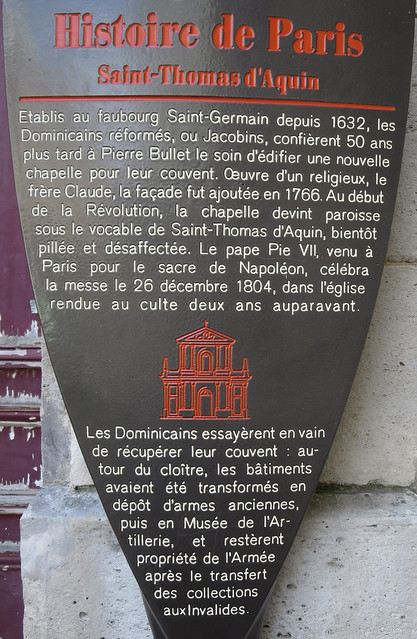Saint-Thomas d'Aquin. Establis au faubourg Saint-Germain depuis 1632, les Dominicains réformés, ou Jacobins, confièrent 50 ans plus tard à Pierre Bullet le soin d'édifier une nouvelle chapelle pour leur couvent. Oeuvre d'un religieux, le frère Claude, la façade fut ajoutée en 1766. Au début de la Révolution, la chapelle devint paroisse sous le vocable de Saint-Thomas d'Aquin, bientôt pillée et désaffectée. Le pape Pie VII, venu à Paris pour le sacre de Napoléon, célébra la messe de 26 décembre 1804, dans l'église rendue au culte deux ans auparavant. Les Dominicains essayèrent en vain de récupérer leur couvent: autour du cloître, les bâtiments avaient été transformés en dépôt d'armes anciennes, puis en Musée de l'Artillerie, et restèrent propriété de l'Armée après le transfert des collections aux Invalides.
Place Saint Thomas d'Aquin, Paris
Google Streetview
OpenStreetMap
Subjects
None identified yet. Subjects are curated by hand so please bear with us.

